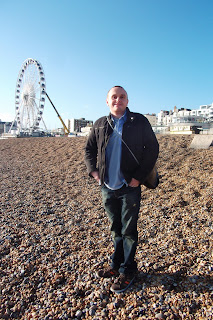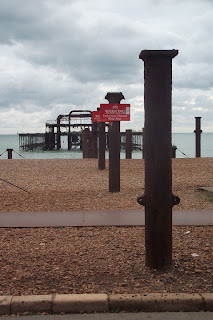Brighton is the major part of the city of Brighton and Hove (formed from the previous towns of Brighton, Hove, and several other villages) in East Sussex, England on the south coast of Great Britain.
Hove museum:
The ancient settlement of Brighthelmstone dates from before Doomsday Book (1086), but it emerged as a health resort featuring sea bathing during the 18th century and became a destination for day trippers from London after the arrival of the railway in 1841. Brighton experienced rapid population growth, reaching a peak of over 160,000 by 1961.
Since the 1978 demolition of the open-air lido at Black Rock, the most easterly part of Brighton's seafront, the area has been developed and now features one of Europe's largest marinas.
Brighton Marine Palace and Pier (long known as the Palace Pier) opened in 1899. It features a funfair, restaurants and arcade halls.
Our room with a view:
The West Pier was built in 1866 and has been closed since 1975 awaiting renovation, which faces continual setbacks. The West Pier is one of only two Grade I listed piers in the United Kingdom, but suffered two fires in 2003.
The seafront has bars, restaurants, nightclubs and amusement arcades, principally between the piers. Being less than an hour from London by train has made the city a popular destination. Brighton's beach, which is a shingle beach up to the mean low tide mark, has been awarded a blue flag.
The Royal Pavilion is a former royal palace built as a home for the Prince Regent during the early 19th century, under the direction of the architect John Nash, and is notable for its Oriental interior.
The lanes – area of unique shops













































